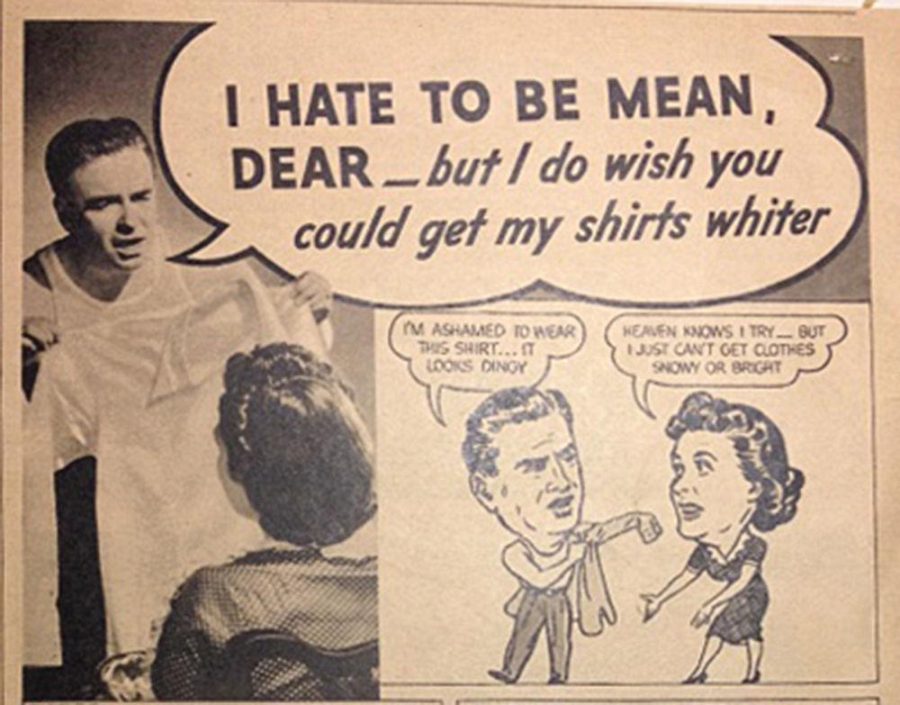Unwrapping sexism: Gender roles in Holiday advertising are alive and well
December 8, 2014
Holiday commercials targeting women generally depict mothers in a frenzy to buy gifts, wrap presents, bake cookies, clean the guest bedroom for the in-laws or decorate the Christmas tree as perfectly as the one on the cover of Better Homes and Gardens.
“Mom, you own this season,” says a Wal-Mart holiday TV ad.
Holiday commercials geared towards men, on the other hand, focus on buying the perfect gift. The ad dictates: buy the perfect diamond necklace, and reawaken the sex life that’s gone dormant after child No. 2.
Despite the many positive traditions of the holiday season, holiday-based advertising continues to highlight a gender divide running through America since the 19th century: Men make the money and bring the gifts to a perfectly clean, peppermint-scented home, where women await to greet them.
The responsibility of holiday festivities falls on women, but the financial pressure for gifts and other material items fall on men. Or, more simply, women are the homemakers, while men are the money makers. What is more worrisome is that gender roles during the holiday season seem to parallel their representation in advertising.
A 2006 study by the American Psychological Association on gender-related stress during the holiday season found that women are “particularly vulnerable.”
“It is women who shoulder the majority of the family burden for shopping and holiday celebrations and they feel particular stress from the time crunch required to get everything done,” the study said.
Of course, stereotypical gender depictions are not new to holiday advertising. Whether this stress is society-imposed or self-imposed, the gender divide during holiday preparations — and moreover the lack of awareness about that divide — seems misaligned with the recent expansion of the global feminist movement seen in some workplaces and across the media.
While women make up nearly half of the workforce in this country, ads still capture the traditional stereotype of women as homemakers and men as the breadwinners and providers.
This type of advertising should be hurting business because it’s blatantly misleading. Most women should be opting not to shop at particular stores because of these discriminatory ads, right? Unfortunately, this is not likely, as businesses would be quick to change this practice if it were unsuccessful.
Women should avoid shopping at stores guilty of this kind of discriminatory advertising, at least until the businesses begin to target women’s money just as equally as they do men’s.
Yet, to most Americans, this may seem like an impossible task, since the traditional mother-centric image of the holidays is so ingrained in our culture and advertising.
This portrayal of holiday shopping is simply outdated. In recent years particularly, celebrity support, protests, congressional hearings and policy change have reinvigorated the feminist movement.
Contemporary American citizens have proved that they are willing to be outspoken and sacrifice for change. For instance, American consumers boycotted Amazon for its unfair treatment of authors, and Ferguson, Mo., residents refused to participate in Black Friday following the failure to indict the police officer who shot Michael Brown. Companies that perpetuate unfair stereotypes against women should face similar treatment from consumers.
Perhaps then women will see a Christmas miracle next year — advertising that displays women for what they are: equal.
Write to Jess at [email protected]








